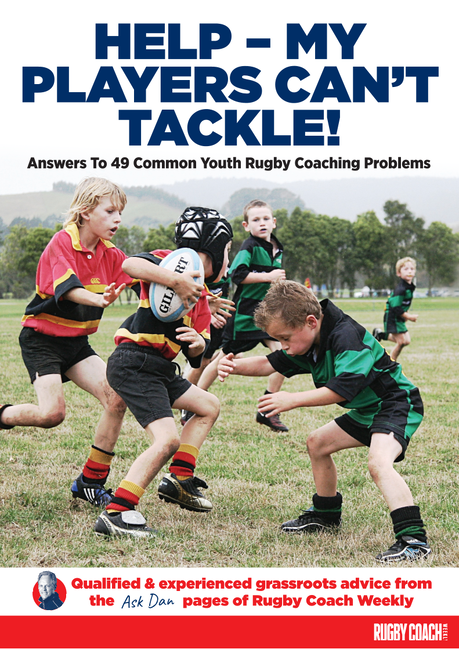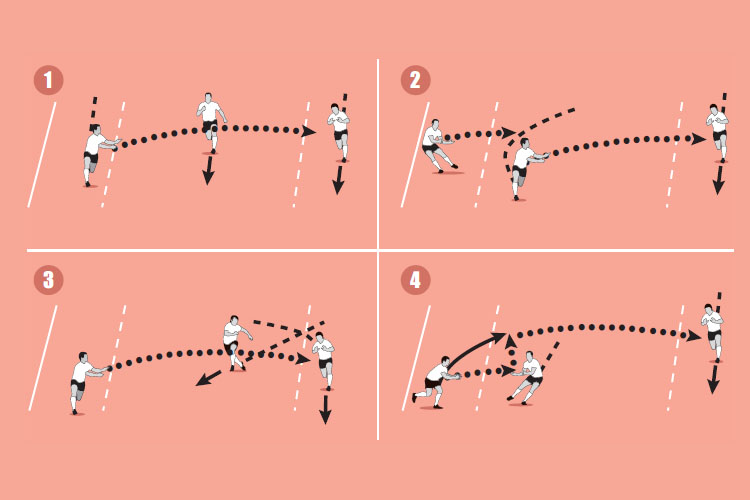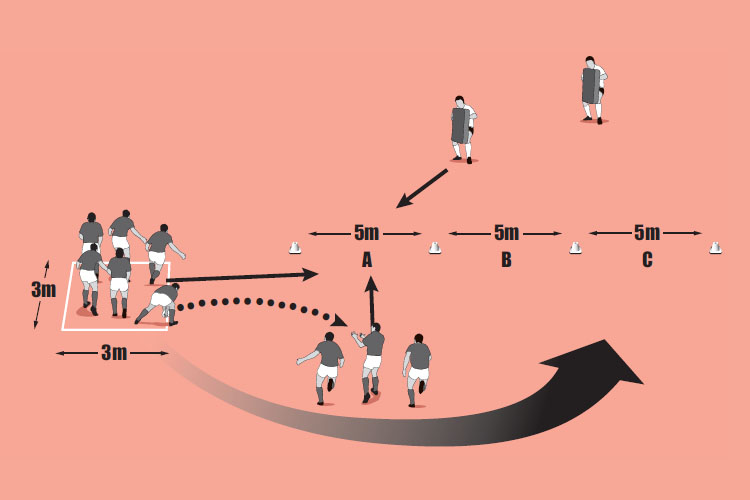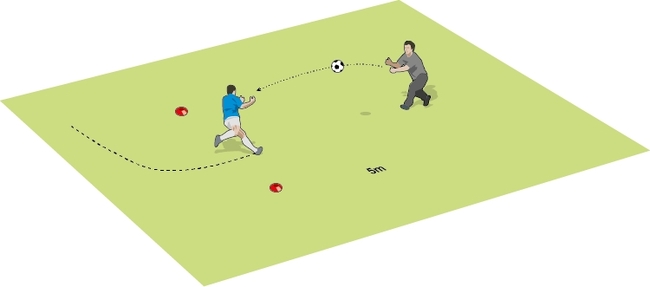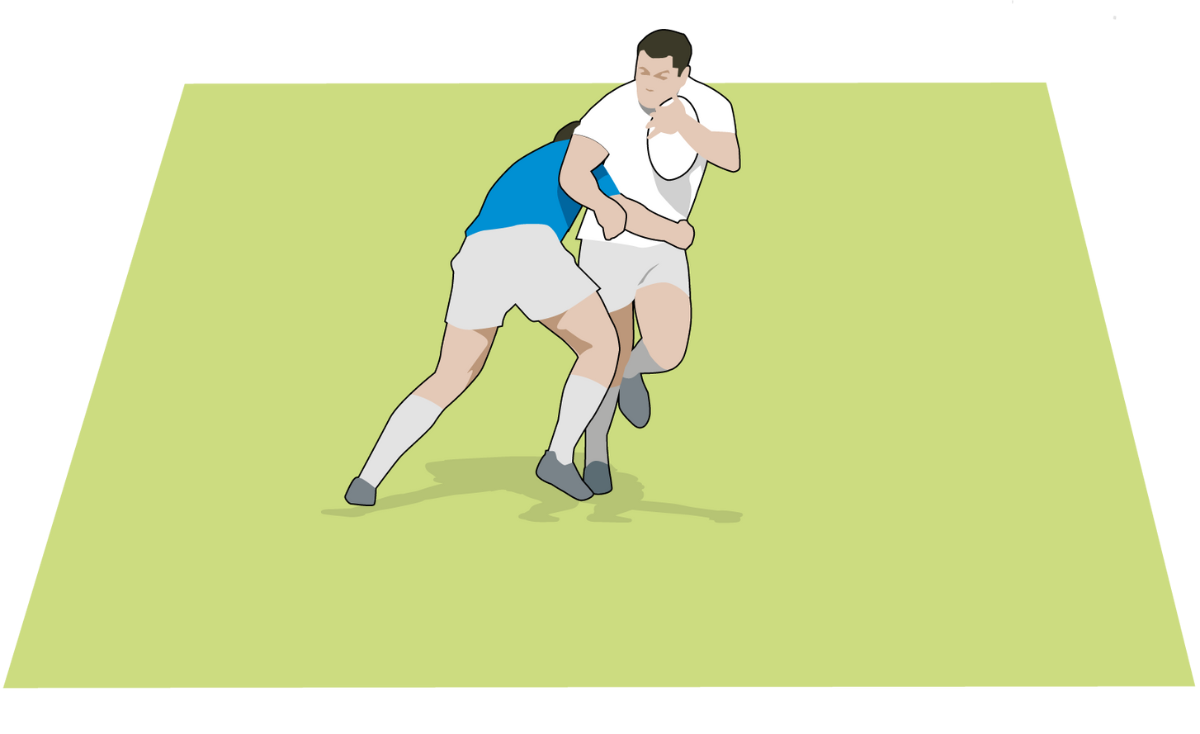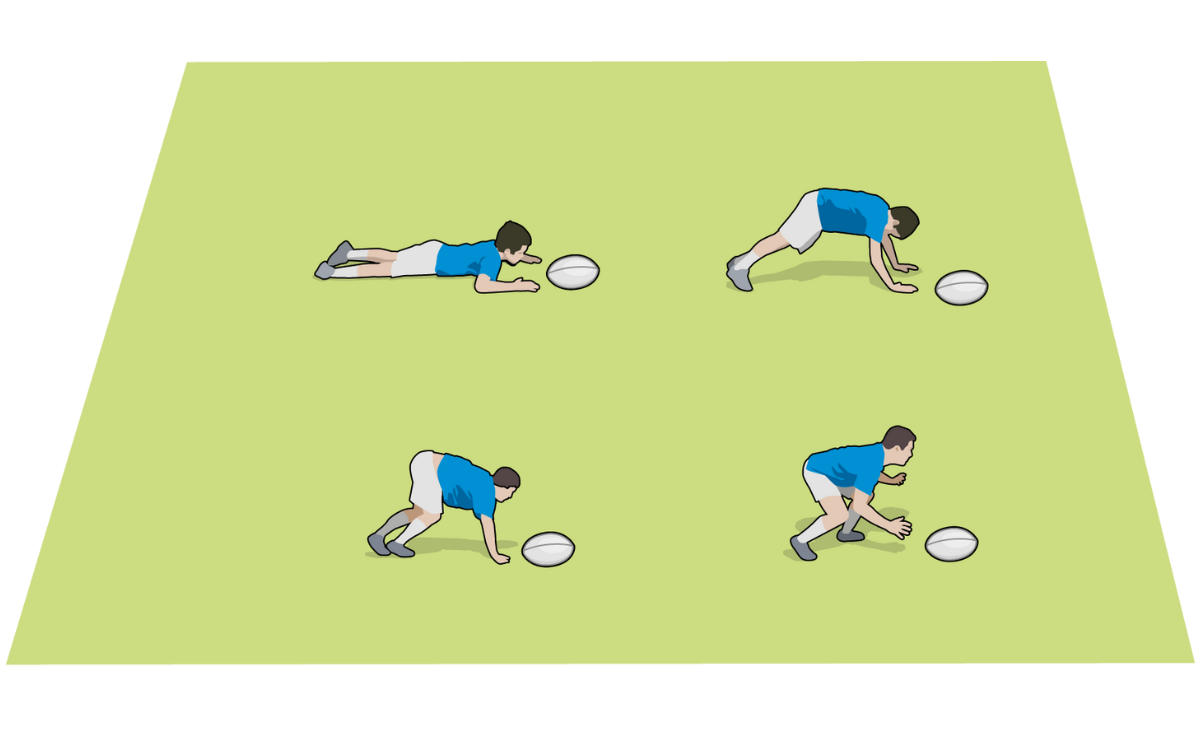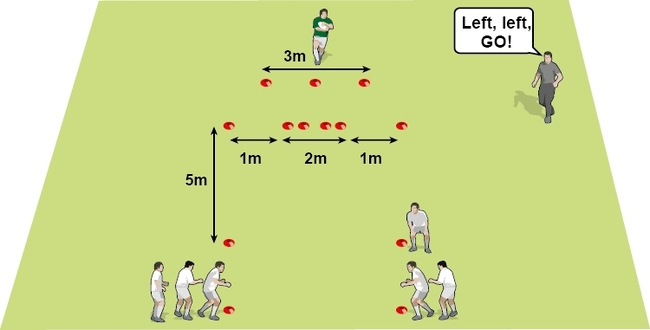Soak-up tackle
Not every tackle can be “aggressive”. Sometimes the tackler needs to accept that he cannot “win” the contact but still needs to bring the ball carrier to ground effectively and quickly. This session works on players reading the situation and not being afraid to give up ground as long as the tackle is made.

Not every tackle can be “aggressive”. Sometimes the tackler needs to accept that he cannot “win” the contact but still needs to bring the ball carrier to ground effectively and quickly. This session works on players reading the situation and not being afraid to give up ground as long as the tackle is made.
Warm up time: 5-7
Session time: 8-10
Development time: 10-15
Game time: 10-15
Warm down time: 5-8
What to think about
Even for soak-up tackles, the tackler cannot “move away” from the tackle. He needs good footwork to get in and under the ball carrier. As he soaks up the tackle, he needs to work on manipulating his body to unbalance the ball carrier further. A good soak-up tackle uses the momentum of the ball carrier to tip him over his centre of gravity, so his shoulders come further forward than his balance can take and he falls to the ground. Therefore the soak-up can either be a low tackle at about thigh height, or at chest height, pulling the ball carrier forward.
set-up
- Tackler: Get in front of the ball carrier and use his momentum to take him down.
- Shape your body to soak up the tackle, so he falls over you rather than you bouncing off with the impact.
What you get your players to do
Put a ball and feeder by a ruck pad. Put an attacker about 2m to the side. Put a defender in the box, opposite the feeder. Get the ball fed to the attacker who aims to beat the defender and score at the far end. The defender has to make sure he tackles the attacker before he makes it to the far end. Swap the side that the ball is fed. Start the attacker from different angles and distances, depending on the success rate of the tackler (see picture 1).
Thank you for reading
to enjoy 3 free articles,
our weekly newsletter, and a free coaching e-book
Or if you are already a subscriber, login for full access
Premium Books
Newsletter Sign Up
Coaches Testimonials

Gerald Kearney, Downtown Las Vegas Soccer Club

Paul Butler, Florida, USA

Rick Shields, Springboro, USA

Tony Green, Pierrefonds Titans, Quebec, Canada
Subscribe Today
Be a more effective, more successful rugby coach
In a recent survey 89% of subscribers said Rugby Coach Weekly makes them more confident, 91% said Rugby Coach Weekly makes them a more effective coach and 93% said Rugby Coach Weekly makes them more inspired.
Get Weekly Inspiration
All the latest techniques and approaches
Rugby Coach Weekly offers proven and easy to use rugby drills, coaching sessions, practice plans, small-sided games, warm-ups, training tips and advice.
We've been at the cutting edge of rugby coaching since we launched in 2005, creating resources for the grassroots youth coach, following best practice from around the world and insights from the professional game.




